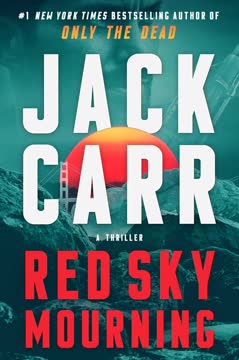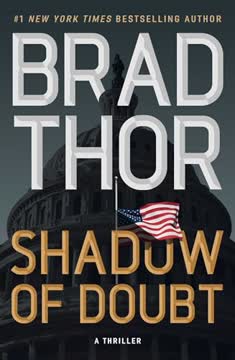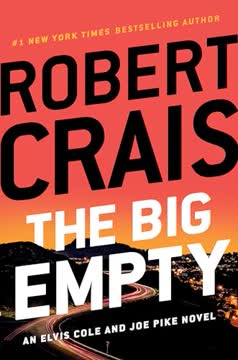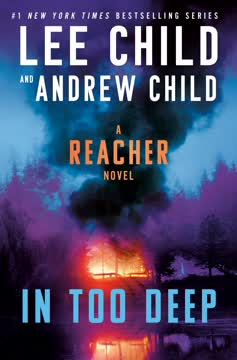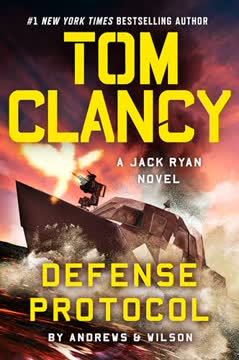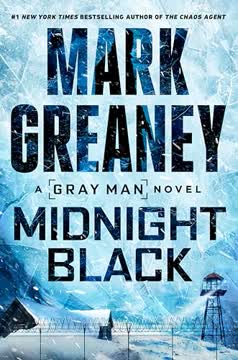Plot Summary
A Precarious Gathering in Iran
Azad Ashani, a high-ranking Iranian intelligence officer, finds himself in a precarious position in Isfahan, Iran. As he stands on a cliff, he contemplates the dangerous game he is playing, caught between his loyalty to Iran and the catastrophic plans of the Quds Force. Battling a terminal illness, Ashani is approached by Darian Moradi, a cleric with political connections, who questions their current path. Ashani knows he must make a deal with the devil to protect his family and country, highlighting the internal and external threats he faces.
Rapp's Dangerous Encounter in Islamabad
Mitch Rapp, a seasoned CIA operative, is in Islamabad, Pakistan, on a mission to eliminate a terrorist financier known as FAIRBANKS. Unexpectedly, he is approached by Colonel Dariush Ruyintan, a notorious Iranian Quds Force commander, who proposes a dangerous alliance. Ruyintan offers Rapp information about a new threat to American forces in Afghanistan, leaving Rapp torn between his mission and the potential intelligence. This encounter sets Rapp on a new path, uncovering the truth behind the Iranian's claims.
A Deadly Ambush in Afghanistan
Captain Mark Garner leads a Ranger company on a mission in Afghanistan, based on CIA intelligence. The operation turns into a deadly ambush when insurgents attack with advanced weaponry, resulting in significant casualties and the capture of a Ranger named Saxton. The mission's failure raises questions about the intelligence provided and the presence of a new threat, prompting a desperate search for answers and a rescue mission.
Rapp's Risky Rescue Mission
Determined to uncover the truth and rescue the captured Ranger, Mitch Rapp infiltrates a mountain stronghold in Afghanistan. Posing as a fellow insurgent, he gains the trust of a warlord named CYCLONE, orchestrating a fake rescue operation to gain information. Rapp navigates treacherous terrain and hostile forces, relying on his skills and instincts to complete his mission and escape with the Ranger, highlighting the complexities of international alliances and personal risks.
Ashani's Dilemma and Decision
Azad Ashani arrives in Kabul, Afghanistan, for a crucial meeting with Mitch Rapp. Facing pressure from his government and his conscience, Ashani reflects on his options: flee to Paris with his family or continue his dangerous game with the Americans. With time running out and no contact from Rapp, Ashani decides to travel to Islamabad, hoping to protect his family and prevent a disaster, even as he risks everything by engaging with the forces he seeks to undermine.
Nash's Diplomatic Distraction in Islamabad
Mike Nash, a CIA deputy director, is in Islamabad, Pakistan, tasked with a delicate diplomatic mission. His official role is to remind Pakistan of its obligations in the war on terror, but his true purpose is to create a diversion, drawing attention away from Mitch Rapp's covert operations. Nash's presence is provocative, designed to keep Pakistani intelligence focused on him while Rapp and a CIA NOC, Noreen Ahmed, work in the shadows. Nash grapples with the complexities of his new role and the personal sacrifices it demands.
Rapp's High-Stakes Interception Plan
Mitch Rapp is on a mission to intercept Azad Ashani, who is being forcibly taken back to Iran by Colonel Ruyintan. With the help of Noreen Ahmed, Rapp devises a bold plan to stop the rendition at Islamabad International Airport. The operation involves disguises, quick thinking, and a high-stakes confrontation on the tarmac. Rapp's actions are driven by the need to secure Ashani's intelligence, which could prevent a catastrophic attack and confirm the location of Osama bin Laden.
A Desperate Race Against Time
With Ashani's information in hand, Rapp learns that Ruyintan plans to use shoulder-fired missiles to disrupt a critical SEAL Team 6 operation targeting bin Laden. Racing against time, Rapp and his team must locate and neutralize Ruyintan before he can execute his plan. The pursuit takes them through the rugged terrain of Pakistan, with Rapp relying on his instincts and the support of his team to track down the elusive Iranian colonel. The mission is fraught with danger, as Rapp must outmaneuver a well-prepared enemy to protect the SEALs and ensure the success of the bin Laden raid.
Rapp's Tactical Showdown in Abbottabad
In a tense showdown near Abbottabad, Rapp confronts Ruyintan and his operatives. The stakes are high, as the SEAL Team 6 helicopters approach their target. Rapp's tactical acumen is put to the test as he engages in a deadly firefight to prevent the launch of the missiles. The battle is intense, with Rapp using every skill at his disposal to outsmart and outfight the Iranian forces. His success is crucial, not only for the immediate mission but also for the broader war on terror, as it ensures the SEALs can proceed with their historic operation.
The Aftermath and New Beginnings
In the aftermath of the mission, Rapp and his team reflect on their actions and the lives lost. The successful raid on bin Laden's compound marks a significant victory, but it comes at a personal cost. Rapp grapples with the loss of Noreen Ahmed, whose bravery was instrumental in the mission's success. As the dust settles, Rapp and his colleagues consider the future, acknowledging the ongoing challenges in the fight against terrorism. The chapter closes with a sense of resolve, as Rapp and his team prepare for the next chapter in their relentless pursuit of justice.
Characters
Mitch Rapp
Mitch Rapp is a seasoned CIA operative known for his ability to adapt and survive in the most dangerous situations. His mission in Islamabad to eliminate a terrorist financier is complicated by an unexpected encounter with an Iranian commander, leading him to a new, potentially more dangerous mission in Afghanistan. Rapp's determination to uncover the truth and protect American lives drives him to take significant risks, showcasing his skills and instincts as he navigates a complex web of international intrigue.
Azad Ashani
Azad Ashani is a high-ranking Iranian intelligence officer facing a terminal illness and a moral dilemma. Caught between his loyalty to Iran and his fear of the Quds Force's plans, Ashani seeks to protect his family and prevent a disaster. His interactions with Mitch Rapp and the internal politics of Iran highlight his precarious position and the difficult choices he must make to secure a future for his loved ones.
Colonel Dariush Ruyintan
Colonel Dariush Ruyintan is a notorious Iranian Quds Force commander with a history of orchestrating attacks against American forces. His unexpected proposal to Mitch Rapp in Islamabad reveals a new threat to U.S. interests in Afghanistan. Ruyintan's motivations and true intentions remain unclear, making him a formidable and unpredictable opponent in the complex geopolitical landscape.
Captain Mark Garner
Captain Mark Garner is a Ranger company commander tasked with a high-stakes mission in Afghanistan. When the operation turns into a deadly ambush, Garner must navigate the chaos and make difficult decisions to protect his men and complete the mission. His leadership and resolve are tested as he seeks answers and a way to rescue his captured Ranger, highlighting the challenges faced by military leaders in combat.
Saxton
Saxton is a Ranger captured during a mission gone wrong in Afghanistan. His resilience and determination to survive are evident as he endures captivity and a daring rescue by Mitch Rapp. Saxton's experience underscores the dangers faced by soldiers in the field and the importance of teamwork and trust in life-and-death situations.
Darian Moradi
Darian Moradi is a young cleric and Ashani's deputy in the Iranian Ministry of Intelligence. His political connections and potential influence make him a key player in the internal dynamics of Iran. Moradi's interactions with Ashani reveal his ambition and the delicate balance of power within the Iranian government, as well as the potential for change in the nation's approach to international relations.
Mike Nash
Mike Nash is a CIA deputy director tasked with a complex diplomatic mission in Islamabad. His role is to create a diversion, drawing attention away from Rapp's covert operations. Nash's character is marked by a deep sense of duty and a struggle to balance his professional responsibilities with personal sacrifices. His interactions with Pakistani officials and his strategic thinking are pivotal in supporting Rapp's mission, underscoring his importance in the broader narrative.
Noreen Ahmed
Noreen Ahmed is a CIA officer operating under non-official cover in Pakistan. Her role is crucial in gathering intelligence and supporting Rapp's mission. Noreen's bravery and quick thinking are instrumental in the operation's success, but her journey ends in tragedy. Her character highlights the personal sacrifices made by those in the intelligence community and the high stakes of their work.
Plot Devices
The Ambush
The ambush in Afghanistan serves as a pivotal plot device, highlighting the dangers of relying on flawed intelligence and the unpredictable nature of warfare. The event sets off a chain reaction, prompting a desperate search for answers and a rescue mission, while also revealing the presence of a new threat in the region. The ambush underscores the high stakes and complexities of military operations in hostile environments.
The Rescue Mission
Mitch Rapp's rescue mission in the mountains of Afghanistan is a key plot device that showcases his resourcefulness and ability to adapt to changing circumstances. The mission brings together various characters and forces, highlighting the complexities of international alliances and the personal risks taken by operatives in the field. The rescue mission serves as a turning point in the narrative, driving the story forward and setting the stage for future developments.
Diplomatic Diversion
The diplomatic diversion orchestrated by Mike Nash serves as a key plot device, drawing attention away from Rapp's covert operations. This strategic misdirection allows Rapp and his team to operate with reduced scrutiny, highlighting the complexities of international espionage and the importance of strategic planning in high-stakes missions.
High-Stakes Interception
The high-stakes interception of Ashani at Islamabad International Airport is a pivotal plot device that underscores the urgency and danger of the mission. This operation highlights Rapp's resourcefulness and the critical importance of securing Ashani's intelligence to prevent a catastrophic attack and confirm bin Laden's location.
Tactical Showdown
The tactical showdown near Abbottabad serves as a climactic plot device, bringing the narrative to a tense and action-packed conclusion. This confrontation between Rapp and Ruyintan's forces is crucial in preventing the launch of missiles and ensuring the success of the SEAL Team 6 operation, emphasizing the high stakes and personal risks involved in the mission.
Analysis
"Capture or Kill" by Don Bentley delves into the intricate world of espionage, highlighting the personal and professional sacrifices made by operatives in the field. The narrative explores themes of loyalty, duty, and survival, as characters navigate a complex web of international intrigue and geopolitical tensions. The book underscores the high stakes of intelligence work, where decisions can have far-reaching consequences. Through its characters and plot devices, the story emphasizes the importance of strategic thinking, adaptability, and resilience in the face of danger. Ultimately, the book serves as a reminder of the ongoing challenges in the fight against terrorism and the relentless pursuit of justice.
Last updated:
FAQ
Synopsis & Basic Details
What is Capture or Kill about?
- High-stakes intelligence race: Capture or Kill plunges readers into a relentless race against time as CIA operative Mitch Rapp navigates a treacherous landscape of international espionage. After a Ranger raid in Afghanistan is ambushed, Rapp uncovers a sinister Iranian plot involving advanced missiles and a high-value target, forcing him to make impossible choices to protect American lives and national security.
- Unsanctioned covert operations: The narrative follows Rapp as he deviates from conventional protocols, undertaking unsanctioned missions to gather critical intelligence and neutralize threats. His journey takes him from the bustling streets of Islamabad to the rugged mountains of Afghanistan, culminating in a desperate pursuit to prevent a catastrophic attack.
- Geopolitical chess match: Beyond the action, the story explores the complex geopolitical tensions between the U.S., Iran, and Pakistan, revealing the intricate web of alliances, betrayals, and hidden agendas that define the war on terror. It's a high-stakes game where loyalty is fluid and the lines between ally and adversary are constantly blurred.
Why should I read Capture or Kill?
- Relentless, high-octane action: Don Bentley delivers a pulse-pounding thriller filled with expertly choreographed combat sequences, daring infiltrations, and a constant sense of urgency. Readers seeking non-stop action and tactical realism will find themselves immersed in Rapp's dangerous world, from helicopter crashes to close-quarters gunfights.
- Deep psychological character dives: The novel offers a compelling look into the minds of its protagonists, particularly Mitch Rapp and Irene Kennedy, exploring their personal sacrifices, moral dilemmas, and the psychological toll of their work. It delves into themes of duty, trauma, and the blurred lines of justice, providing a richer understanding of the human cost of espionage.
- Timely geopolitical relevance: Set against the backdrop of the hunt for Osama bin Laden and the complexities of U.S. relations with Pakistan and Iran, the story feels incredibly current. It provides a fictionalized yet insightful commentary on the challenges of counterterrorism, the nature of intelligence gathering, and the delicate balance of power in a volatile region.
What is the background of Capture or Kill?
- Post-9/11 counterterrorism landscape: The novel is set in April-May 2011, directly referencing the actual raid to capture or kill Osama bin Laden (Operation Neptune Spear). The author's note explicitly states, "WHILE this book draws upon some of the actual elements surrounding the raid to capture or kill Osama bin Laden, it is still a work of fiction." This historical context grounds the high-stakes narrative in a period of intense counterterrorism efforts.
- Complex U.S.-Pakistan-Iran relations: The story highlights the fraught relationship between the U.S. and Pakistan, an "unreliable ally" (Chapter 16) whose intelligence service (ISI) is suspected of double-dealing and harboring terrorists. Simultaneously, it explores the deep-seated animosity and covert warfare between the U.S. and Iran, particularly through the actions of the Quds Force and MOIS, reflecting real-world geopolitical tensions.
- Technological and operational realism: Bentley, a former FBI agent and Apache pilot, infuses the narrative with authentic details about military and intelligence operations, from night-vision technology and drone surveillance (Reaper UAV, Chapter 24) to specialized weapons (explosively formed penetrators, Chapter 4) and clandestine tradecraft (burner phones, dead drops, Chapter 6). This technical accuracy enhances the immersion and credibility of the high-stakes missions.
What are the most memorable quotes in Capture or Kill?
- "Sometimes survival required a willingness to do the unthinkable." (Ashani, Prologue): This quote encapsulates Azad Ashani's desperate moral calculus as he contemplates betraying his country to save his family, setting the stage for his pivotal role as a reluctant informant. It highlights the extreme pressures and ethical compromises inherent in the world of espionage.
- "The old rules no longer applied." (Rapp, Chapter 1): Mitch Rapp's internal declaration regarding his mission to kill FAIRBANKS signifies a shift in the U.S. approach to counterterrorism, moving beyond diplomatic niceties to blunt-force action. This quote defines Rapp's relentless, uncompromising nature and the escalating stakes of the global conflict.
- "I will never fail you like I failed them, Irene. Never." (Rapp, Epilogue): This deeply personal confession from Rapp to Irene Kennedy reveals the profound impact of his fiancée's death on his psyche and his unwavering commitment to protecting those he cares about. It underscores the emotional core beneath his hardened exterior and explains his relentless pursuit of justice.
What writing style, narrative choices, and literary techniques does Don Bentley use?
- Third-person limited perspective: Bentley primarily employs a tight third-person limited point of view, often shifting between key characters like Rapp, Kennedy, Nash, Ashani, and Garner. This allows readers deep access to their internal thoughts, motivations, and emotional states, building empathy and tension, as seen in Rapp's internal monologue about FAIRBANKS in Chapter 12.
- Propulsive, action-driven pacing: The narrative maintains a relentless, high-stakes pace, characterized by short, impactful chapters and frequent scene changes. Bentley uses vivid, visceral descriptions of combat and tactical maneuvers, creating an immersive and adrenaline-fueled reading experience, exemplified by the Chinook ambush in Chapter 9 and Rapp's cave escape in Chapter 34.
- Foreshadowing and thematic echoes: Subtle hints and recurring motifs are woven throughout the story, such as Ashani's worsening cough foreshadowing his terminal illness (Prologue) or the repeated mention of "missing missiles" (Chapter 72) building suspense. Bentley also uses contrasting character arcs and mirrored relationships to explore themes of loyalty, betrayal, and the personal cost of war.
Hidden Details & Subtle Connections
What are some minor details that add significant meaning?
- Ashani's Red Handkerchief: The recurring detail of Ashani's "red handkerchief" (Prologue) and his refusal to check it for blood speckles (Chapter 17) subtly but powerfully symbolizes his terminal illness and his acceptance of his impending death. This seemingly minor detail underscores his desperate motivation to secure his family's future, driving his risky betrayal.
- Rapp's Meticulous French Persona: Rapp's exaggerated attention to detail, like perfectly placing his spoon "exactly ninety degrees from the cup" (Chapter 1), is not just a quirk but a deliberate part of his "legend" as a meticulous French businessman. This subtle act of tradecraft highlights his deep commitment to his cover and his ability to manipulate perceptions, even in high-stress situations.
- Compound's Trash Burning: The observation that the bin Laden compound's residents "burn their trash" (Chapter 59) is a seemingly mundane detail that signifies an extreme level of operational security. This small act reveals the inhabitants' paranoia and meticulousness, reinforcing the CIA's belief that a high-value target is indeed present and actively trying to avoid detection.
What are some subtle foreshadowing and callbacks?
- Ruyintan's "Unambiguous Message": Ruyintan's statement that killing FAIRBANKS would send "an unambiguous message—the old rules no longer applied" (Chapter 1) subtly foreshadows the escalating, brutal nature of the conflict. This callback to Rapp's initial mission sets the tone for the subsequent unsanctioned assassinations Rapp carries out, demonstrating the shift in the war on terror's rules of engagement.
- Irene's Panic Attacks: The brief, almost imperceptible moments where Irene struggles with her composure, like her chest tightening (Chapter 25) or fighting the urge to shiver (Chapter 26), subtly foreshadow her later revelation of panic attacks. This callback to her past kidnapping and torture by Iranian Quds Force (Chapter 53) adds a layer of psychological depth, showing the lasting trauma of her experiences.
- The "Missing Missile" Motif: The repeated discovery of "missing missiles" – first the two from Coleman's interdiction (Chapter 72), then the one from Ruyintan's van (Chapter 92) – serves as a crucial callback and escalating plot device. It subtly hints at Ruyintan's larger, more complex plan beyond simple attacks, forcing Rapp to continually re-evaluate the threat and ultimately leading him to the final confrontation.
What are some unexpected character connections?
- Moradi as Ashani's Unwitting Pawn: Darian Moradi, initially presented as a rising cleric and Ashani's deputy, is unexpectedly revealed to be an unwitting pawn in Ashani's scheme to contact Rapp. Ashani "played" Moradi by having him suggest the Farid Saeed dossier to Ruyintan (Chapter 51), creating a subtle, indirect connection between Ashani and Rapp that Moradi himself was unaware of, highlighting Ashani's cunning.
- Rapp's Personal Vendetta for Irene: The brutal interrogation of Moradi reveals Rapp's deeply personal connection to Irene Kennedy's past kidnapping and torture. Rapp explicitly states, "Your Quds Force thugs snatched one of my closest friends and beat the shit out of her" (Chapter 53), transforming his professional duty into a personal vendetta against those responsible, an unexpected layer of motivation.
- Saxton's Unexpected Camaraderie with Rapp: Despite their initial antagonistic dynamic (Rapp pissing on him, Saxton's "I hate you" in Chapter 40), Ranger Fred Saxton and Rapp develop an unexpected, albeit begrudging, camaraderie. Saxton's resilience and Rapp's willingness to save him forge a bond that transcends their initial animosity, showcasing the unexpected connections formed under extreme duress.
Who are the most significant supporting characters?
- Stan Hurley: The Unseen Hand: Rapp's mentor, Stan Hurley, plays a crucial, albeit initially unseen, role in Rapp's operations. His unexpected arrival in Islamabad with a full kit (Chapter 89) and his willingness to "save your ass" (Chapter 89) provides Rapp with critical tactical support and a much-needed sounding board, reinforcing his enduring influence on Rapp's methods and mindset.
- Derek: The Resourceful CIA Pilot: Derek, the CIA Air Branch pilot, emerges as a vital supporting character, demonstrating exceptional skill and resourcefulness. His ability to "steal" a Bell JetRanger (Chapter 88) and fly it under extreme conditions, including a crash landing (Chapter 94), is instrumental in Rapp's desperate pursuit of Ruyintan, highlighting the unsung heroes of clandestine operations.
- Bilal Dogar: The Subtle ISI Ally: Bilal Dogar, the ISI corporal, initially appears as a minor contact, but his subtle assistance proves significant. His willingness to provide uniforms and the patrol car (Chapter 78), despite the risks, underscores the complex, often contradictory, nature of alliances within Pakistan's intelligence apparatus, hinting at internal divisions within the ISI.
Psychological, Emotional, & Relational Analysis
What are some unspoken motivations of the characters?
- Ashani's Legacy of Protection: Beyond merely saving his family, Ashani's unspoken motivation is to leave a legacy of protection for them, even in death. His terminal illness (Prologue) and the realization that he "could no longer shoulder the effort to save himself and his nation alone" (Chapter 17) drive him to make a deal with the Americans, ensuring his family's safety long after he's gone, a profound act of paternal love.
- Rapp's Quest for Absolution: While Rapp claims to have moved beyond revenge (Chapter 4), his relentless pursuit of Ruyintan and other Iranian operatives is subtly driven by a deeper, unspoken motivation: a quest for absolution for his perceived failure to protect Anna (Epilogue). His brutal efficiency is a manifestation of his need to prevent similar tragedies, making his actions a form of self-punishment and redemption.
- Nash's Search for Relevance: Mike Nash's eagerness to engage in high-stakes operations, despite his new executive role, is motivated by an unspoken desire to prove his continued relevance in the field. His internal struggle with being a "suit" (Chapter 46) and his longing to "get back in the game" (Chapter 73) reveal a deep-seated need for the adrenaline and purpose that clandestine operations provide, even at personal cost.
What psychological complexities do the characters exhibit?
- Irene's Hidden Trauma and Resilience: Irene Kennedy exhibits profound psychological complexity through her struggle with panic attacks, a direct consequence of her past torture by Iranian Quds Force (Epilogue). Her ability to maintain composure and lead the CIA despite these debilitating episodes showcases immense resilience, but also the hidden psychological scars borne by those in her profession.
- Rapp's Intuitive "Sixth Sense": Rapp displays a unique psychological complexity through his "operational sixth sense" (Chapter 15), an intuitive ability to perceive threats and opportunities beyond logical deduction. This manifests as a visceral "feeling" that bin Laden is in the compound (Chapter 71) or sensing an ambush, highlighting a predatory instinct honed by years of combat and a deep understanding of human behavior.
- Garner's Burden of Command: Captain Mark Garner's psychological state is marked by the immense burden of command, particularly after the loss of his Rangers. His visible anguish, dark rings under his eyes (Chapter 30), and desperate pursuit of his missing soldier reveal the profound emotional toll of leadership in combat, contrasting with the detached analytical approach of some intelligence officers.
What are the major emotional turning points?
- Rapp's Decision to Save Saxton: The emotional turning point for Rapp occurs when he prioritizes the rescue of Sergeant Saxton over the immediate assassination of FAIRBANKS (Chapter 6). This decision, driven by the Ranger Creed's ethos of "never leave a fallen comrade" (Chapter 25), signifies Rapp's evolution from a purely revenge-driven killer to a protector of his fellow operatives, deepening his character.
- Noreen's Transformation from Fear to Resolve: Noreen Ahmed experiences a significant emotional shift from initial fear and stammering (Chapter 58) to resolute determination after Rapp's "test." Her defiant "These men can die of polio for all I care" (Chapter 67) after being manhandled, marks her emotional turning point, showcasing her inner strength and commitment to the mission despite personal indignity.
- Irene's Confrontation with Her Trauma: The most profound emotional turning point for Irene is her raw, vulnerable conversation with Rapp in the epilogue, where he acknowledges her panic attacks and shares his own past struggles. This moment of shared vulnerability allows Irene to begin processing her trauma, signaling a path toward healing and a deeper bond of trust with Rapp.
How do relationship dynamics evolve?
- Rapp and Irene: From Handler to Confidantes: Their relationship evolves from a traditional handler-asset dynamic to one of deep mutual trust and confidantes. Irene increasingly relies on Rapp's intuition and judgment, even when it defies protocol (Chapter 71), while Rapp, in turn, offers her personal support and understanding regarding her trauma (Epilogue), showcasing a profound, almost familial bond.
- Nash's Struggle for Identity and Acceptance: Mike Nash's relationship with Rapp is initially defined by his struggle to adapt to his new executive role and his desire for Rapp's approval. His frustration at being sidelined (Chapter 73) and Rapp's blunt assessment of his "executive persona" (Chapter 73) highlight this tension. However, Rapp's eventual acknowledgment of Nash's "good work" (Chapter 87) signifies a shift towards mutual respect and acceptance of their new dynamic.
- Rapp and Saxton: Adversaries to Allies: The dynamic between Rapp and Sergeant Fred Saxton transforms from initial antagonism, marked by Rapp's "pissing" on him and Saxton's defiant "I hate you" (Chapter 40), to a grudging but effective alliance. Their shared ordeal in the cave and waterfall forges a bond of mutual respect, culminating in Saxton's humorous acceptance of being rescued by a SEAL (Chapter 44), highlighting the unexpected camaraderie forged in combat.
Interpretation & Debate
Which parts of the story remain ambiguous or open-ended?
- Extent of Pakistani Complicity: The novel leaves ambiguous the full extent of the Pakistani government's complicity in harboring terrorists like bin Laden. While the ISI is described as an "unreliable ally" (Chapter 16) and elements within it are suspected of thwarting the U.S., the direct involvement of high-ranking officials in protecting bin Laden remains an open question, allowing for reader interpretation of their true allegiances.
- Moradi's Long-Term Loyalty: Darian Moradi's ultimate loyalty remains open-ended. While he provides critical intelligence under duress (Chapter 53) and later opens a "diplomatic back channel" (Epilogue), his true motivations—whether genuine defection, self-preservation, or a deeper, long-term Iranian strategy—are left for the reader to ponder, suggesting his continued role as a complex, morally ambiguous character.
- Future of Rapp's Unsanctioned Operations: The epilogue reveals Rapp's continued "string of killings" (Epilogue) of Iranian and Hezbollah operatives, unsanctioned by Irene. This leaves open the question of how long Rapp can operate outside official channels without severe repercussions, and whether Irene's tacit approval will eventually lead to a major political fallout or a shift in U.S. policy.
What are some debatable, controversial scenes or moments in Capture or Kill?
- Rapp's "Pissing" on Saxton: Rapp's deliberate act of urinating on Sergeant Saxton (Chapter 29) to provoke a reaction is a highly controversial moment. While tactically effective in confirming Saxton's identity and resilience, it raises ethical questions about Rapp's methods and the dehumanizing aspects of his tradecraft, sparking debate among readers about the line between necessary brutality and gratuitous cruelty.
- The Brutal Interrogation of Moradi: Rapp's torture of Darian Moradi, including threatening to "snap your fucking wrist like kindling" and "remove your eyeball" (Chapter 53), is a deeply controversial scene. It forces readers to confront the efficacy versus morality of extreme interrogation techniques, prompting debate on whether the ends (preventing a major attack) justify such violent means, especially against a non-combatant intelligence official.
- The Decision to Proceed Without Definitive Proof: President Alexander's decision to launch the SEAL raid on bin Laden's compound based solely on Irene's "assurances that Rapp would come through" (Chapter 76) is a highly debatable moment. It highlights the immense pressure on political leaders and intelligence chiefs to act on imperfect information, raising questions about the acceptable level of risk in high-stakes national security operations and the potential for catastrophic failure.
Capture or Kill Ending Explained: How It Ends & What It Means
- Bin Laden's Demise and Noreen's Sacrifice: The novel culminates in the successful SEAL Team 6 raid on Osama bin Laden's compound, directly facilitated by Rapp's last-minute confirmation of bin Laden's presence and his neutralization of Ruyintan and the remaining missiles. However, this victory comes at a tragic cost with the death of Noreen Ahmed, whose bravery in the compound and during the plane interdiction is ultimately recognized with a star on the CIA Memorial Wall (Chapter 85, Epilogue).
- Rapp's Unsanctioned Retribution and Irene's Trauma: In the aftermath, Rapp continues his unsanctioned assassinations of Iranian and Hezbollah operatives responsible for Irene's past torture, acting as a personal avenger. This reveals his deep loyalty and his own unresolved trauma. Irene, grappling with panic attacks stemming from her ordeal, finds solace in Rapp's understanding and his brutal form of justice, highlighting the profound psychological toll of their work.
- The Ongoing, Evolving War on Terror: The ending signifies that while a major victory has been achieved, the war on terror is far from over. The revelation of Iran's sophisticated missile technology and their continued efforts to destabilize the region (Epilogue) underscores the persistent and evolving nature of the threat. The personal sacrifices of characters like Noreen and the psychological burdens carried by Rapp and Irene emphasize that the fight continues, often with unseen costs and moral ambiguities.
Review Summary
Capture or Kill receives mixed reviews from readers. Many praise Bentley's writing style, character development, and action sequences, appreciating his take on a younger Mitch Rapp. Some fans find the book engaging and true to Flynn's legacy. However, others criticize the decision to set the story in 2011, feeling it disrupts the series' continuity. Some readers find the narrative overly descriptive and slow-paced. Despite varying opinions, most agree that Bentley shows potential in continuing the Mitch Rapp series.
Mitch Rapp Series Series
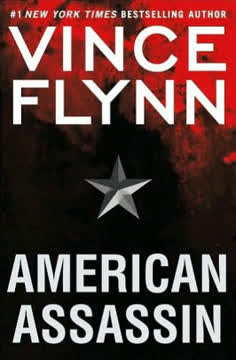
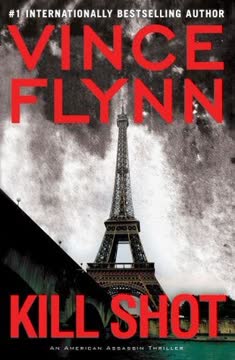
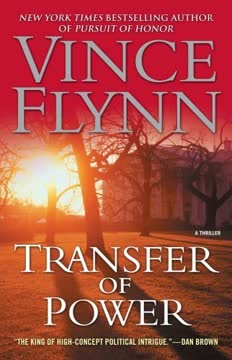
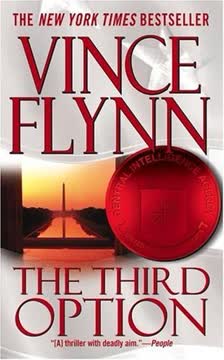

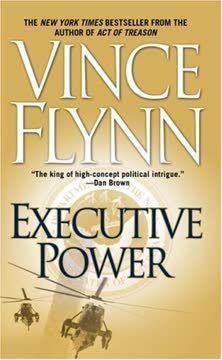
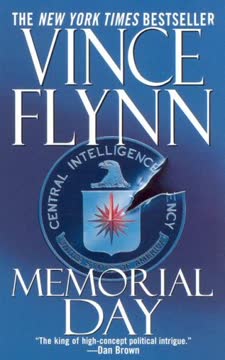
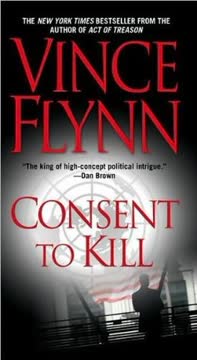
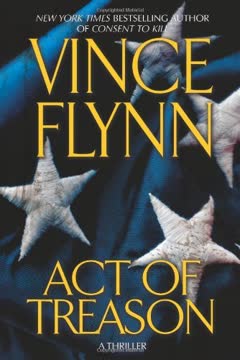

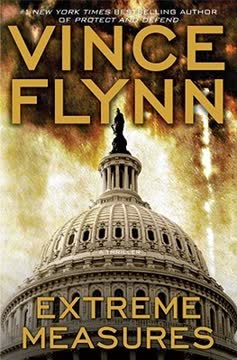
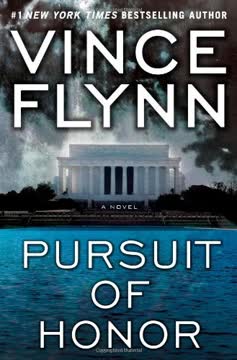
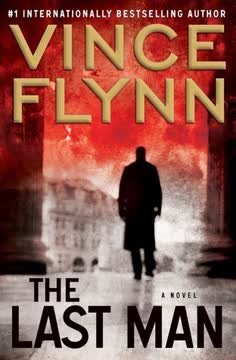

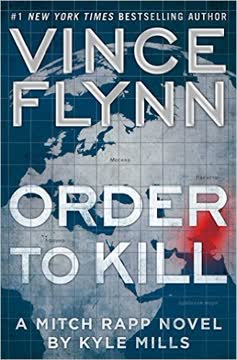
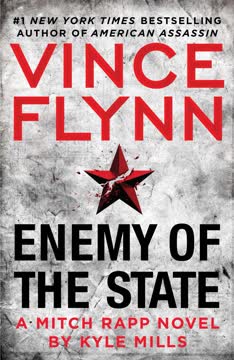
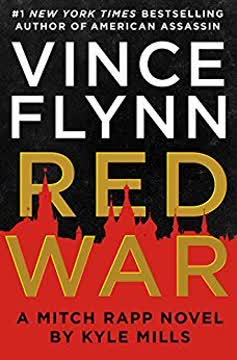
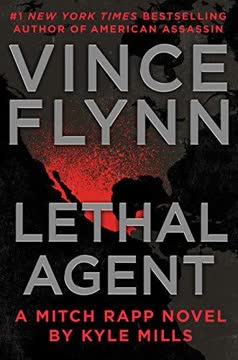
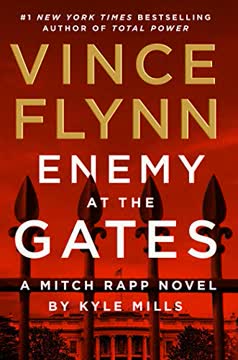
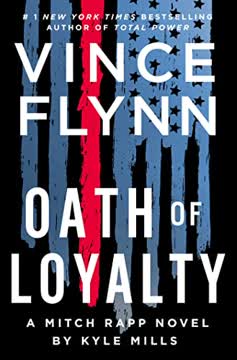
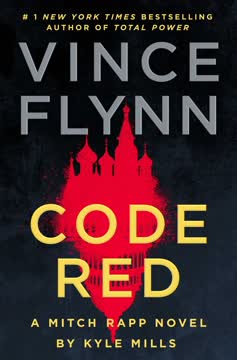

Similar Books
Download PDF
Download EPUB
.epub digital book format is ideal for reading ebooks on phones, tablets, and e-readers.
